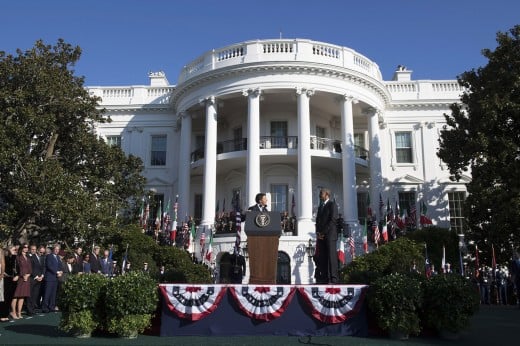Richard Lachmann's "States and Power" - Book Review

Richard Lachmann book, States and Power provides an insight on how power was consolidated and states were formed by seeking answers to the following two questions - how states strengthened their power when confronted with resistance and how subjects responded at variance to that rule and leadership. In his explanation, he places emphasis on the strategies projected by two different and theoretically former, collective groups – elites and classes.
Lachmann begins by providing an explanation on how power and politics operated before states emerged. Before the emergence of states, power and control was limited to kinsfolk. Tribes that upheld similar values eventually came together to form an empire. An example that the author describes in detail is the Roman Empire. The empire came into power by using military power in order to gain support and loot resources. However, the empire demanded a larger brigade as the territories of the empire expanded. It suffered a financial crisis as it could not afford to pay its defense forces and this eventually led to its downfall. The author states that “The fall of the Roman Empire had little effect on local social relations” and the elites “remained relatively unchanged…retreated home or transformed themselves into provincial elites.” This led to the emergence of feudalism as it established structured social connections/alliances among the self-ruling, sovereign elites of Europe
Feudalism served as the next step towards organization and control/monopolization. It led to the establishment of city-states where a single elite had the monopoly over the territories in which a town was located and where “its merchants came under the noble, king or bishop’s domination.” However, this too came to an end due to the feudal instability between the elites and the peasants. Defiance shown by the peasants had a direct impact on the ruler’s returns and this led to fiscal disasters and recessions, which eventually led to its collapse and paved way to the rise of powerful states in Europe.
Lachmann refers Perry Anderson’s Lineages of the Absolutist State, which proposes that states originated after the infamous Black Death tragedy that took place in the fourteenth century. Due to the demographic devastation, feudal lords were unable to manage peasants and thus emerged a “centralized, militarized summit – the Absolutist state.” According to Charles Tilly, self-interested rulers established states by obtaining territories and power by means of divide-and-conquer strategies, homogenizing certain elites and making use of men and resources provided by new allies in order to terrorize and overthrow others. The advent of firearms technology made conquest a lot easier. Tilly points at the development of powerful artillery that could destroy castle walls, thereby making it hard for elites to combat the military. The power of artillery was quickly opposed by stronger fortresses that could withstand it. This series of technological revolution added to the military might of an absolutist state. Only states with a large military force could exist, and only states that could acquire the allegiance of the nobles and merchants could meet the expense of managing a large army. To meet the rising expenses, states began to collect taxes in order to pay their combatants as well as to fund for weaponry.
According to Max Weber, Protestant Reformation had a key role to play in the rise of states. He states that capitalism and other advancements were made in regions of Protestantism and that it led to “psychological shock that disrupted old ways of thinking and behaving, and ushered in modern social action.” As a result of the Protestants “psychic desperation” to be among the elect, states became efficient in collecting taxes, organizing an armed force and supervising their domains. The Reformation, as suggested by Lachmann, led to the rupture of elite connections by bringing about a string of tensions between the class and elites, which in turn led to the rise of states. In other words, the rise of states was an “inadvertent by-product of multiple elites coming together to gain leverage in their conflicts against other elites and peasants.” The Reformation led to a new series of contest between the elites for property and control and it also aided in the formation of new allies.
Do you think revolutions are effective in bringing about a change in social order?
As elites came together, they began to foster a shared interest in bolstering their states’ ability to annex resources, recruit subjects in war and to promote a spirit of national identity that could establish and strengthen allegiance to the state. As subjects were coerced/obliged to serve the state, they began to view themselves as citizens, and in turn, they wanted to have absolute interests in the activities of the state. As such, the development of a national identity helped to strengthen the relationship between the state and the citizens.

Citizens possess rights and as a collective, they elect legislators – an important factor noted by the author that distinguishes a citizen from a subject. The surge in the powers of the citizens brought about a decrease in the power of the elites. This led to electoral democracy since several elites were compelled to sign up non-elite allies in their battle for state power. Lachmann points out that capitalism and economic development too had a role to play in fostering democracy. He states, “…capitalism created capitalists, who, when they challenge older, aristocratic and state elites, create an opening for non-elites to embed their demands in cross-class coalitions…democracy endures.”
Lachmann provides a thorough analysis of how the evolution of states took place, attributing it mostly to the interests of the elites as well as the conflicts between them and their subjects and that in the future, “popular mobilization” will determine the fate of states.

Photo Credits:
- Palazzochigi Cerimonia di accoglienza alla Casa Bianca via photopin (license)
- dmitry_ryzhkov DR151213_0240D via photopin (license)
- sueniero02 AYOZITNAPA - 43 JUSTICIA via photopin (license)







